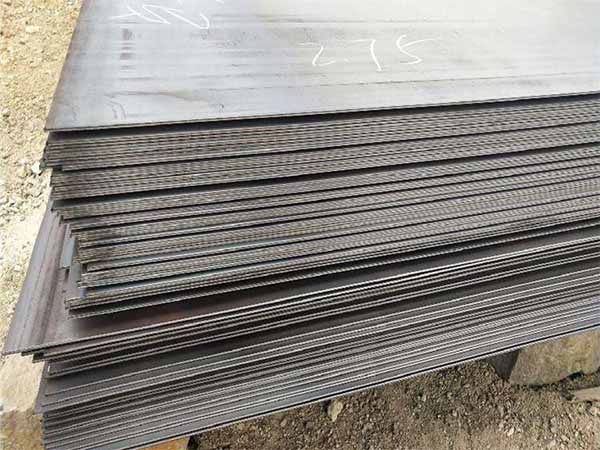Both
ASTM A36 steel plate and
ASTM A516 steel plate belong to carbon steel plates, and they are often mentioned in structural engineering and pressure vessel design. So, as carbon steel plates, what are the differences between them? This article will focus on this topic and take you to have a comprehensive understanding of the differences between A36 steel plates and ASTM A516 steel plates.
1. What are A36 and A516 steel plates
ASTM A36 steel plate: It belongs to low-carbon structural steel, with a carbon content generally not exceeding 0.26%, and contains small amounts of manganese, silicon, phosphorus and sulfur. Its component design pays more attention to processability and cost-effectiveness.
ASTM A516 steel plate: It belongs to carbon steel plates for medium and low-temperature pressure vessels, with a medium carbon content. There are four grades of steel, namely ASTM A516 55, 60, 65 and 70. It is suitable for boilers and pressure vessels in medium and low-temperature environments, featuring superior notch toughness and is particularly suitable for high-pressure application scenarios in industries such as petroleum and chemical engineering.

2. Chemical composition comparison
ASTM A36 Chemical composition
Carbon (C) : ≤ 0.25%
Silicon (Si) : ≤ 0.40%
Manganese (Mn) : approximately 1.03%
Phosphorus (P) : ≤ 0.04%
Sulfur (S) : ≤ 0.05%
Copper (Cu) : up to 0.20% (if corrosion resistance needs to be improved)
ASTM A516 Chemical Composition (Gr 70)
Carbon: approximately 0.10-0.22% (with slight variations depending on thickness)
Silicon and manganese are slightly higher (Si 0.15-0.40%, Mn 0.85-1.20%)
Phosphorus and sulfur: Stricter restrictions (≤ 0.03-0.035%)
Copper-free, with a focus on the performance of pressure vessels
The chemical composition of 516 Gr 70 pays more attention to performance stability, welding reliability and low-temperature toughness, and has stricter limits on impurity content. The A36, however, places more emphasis on versatility and cost-effectiveness.
3. Mechanical performance comparison
|
Property
|
ASTM A36
|
ASTM A516 Gr.70
|
|
Yield Strength (MPa)
|
≥ 250
|
≥ 260
|
|
Tensile Strength (MPa)
|
400 – 550
|
485 – 620
|
|
Elongation (%)
|
≥ 20
|
≥ 21
|
|
Impact Toughness
|
General
|
Excellent, suitable for low-temperature service
|
A36 has moderate strength and meets general structural requirements. A516 has higher strength and toughness, especially outstanding impact toughness, making it suitable for pressure-bearing and low-temperature environments.
4. Toughness, low-temperature performance and inspection
A36: Generally, low-temperature shock tests are not mandatory (unless required by engineering specifications); Its brittleness resistance at lower temperatures is inferior to that of A516.
A516: Designed for pressure vessels, it is often required to conduct Charpy impact tests in accordance with specifications, and the test temperature can be specified according to manufacturing requirements (for example, conducting impact tests at lower temperatures to ensure crack propagation resistance). Therefore, it is more reliable in low-temperature or high-risk pressure-bearing environments.
5. Specifications, thickness and availability
A36: Widely available, various thicknesses and profiles are commonly seen. Quick delivery and relatively low price.
A516: Produced as pressure vessel plate (PVQ), it has a wide thickness range, but delivery may require impact tests and material sheet requirements (such as whether normalization is needed, whether additional inspections such as NACE/HIC are required). The cost and delivery inspection cycle are usually higher than those of ordinary A36.
6. Typical application scenarios: When to choose A36 and when to choose A516?
Scenarios using A36 mild steel plate:
Building structural components (beams, columns)
General manufacturing industry (mechanical frames, support structures)
Low-pressure or non-pressure applications
Scenarios using A516 Grade 70 pressure vessel steel plate:
boiler, pressure vessel (boiler and pressure vessel)
Petrochemical equipment and storage tanks
Welded structural components under medium and low-temperature pressure environments
Frequently Asked Questions (FAQ)
Q: Can A36 replace A516?
A: It is not recommended to replace A516 with A36 in pressure vessels or cryogenic equipment. Although theoretically, A516 (Gr70) has better strength and toughness than A36, the replacement must take into account the specifications (such as pressure vessel specifications, impact/welding requirements) and cost. Random replacement may violate design and safety requirements.
Read more : What is the meaning of A36 plates
